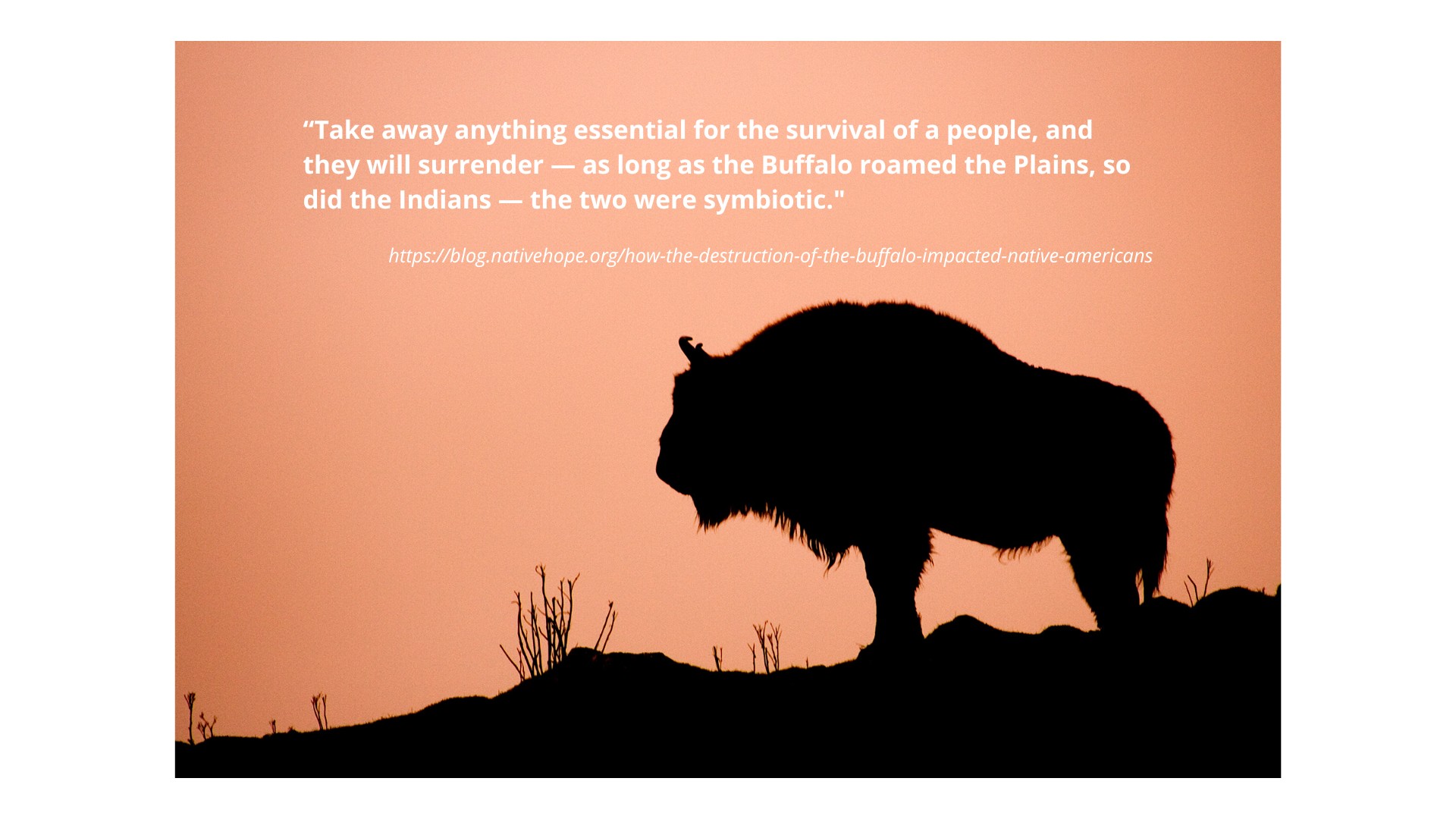Following the American Civil War, the United States government pursued a policy aimed at confining Native American tribes to reservations. Recognizing the crucial role of the buffalo in the lives of Indigenous peoples, the government implemented a deliberate strategy to decimate buffalo herds. This “scorched earth” policy authorized military commanders to systematically destroy buffalo, intending to undermine Native American sustenance, force dependence on government aid, and compel treaty signings.
By 1884, the buffalo had vanished from the Black Hills (Pahá Sápa in Lakota), a region of profound significance as the traditional birthplace of both buffalo and humans. These once abundant creatures, central to the Great Plains ecosystem and Native American culture, were no longer seen. Over a mere half-century, the buffalo eradication campaign resulted in the slaughter of over 40 million animals. Generals William T. Sherman and Philip Sheridan directed soldiers armed with U.S. Cavalry rifles to engage in mass buffalo killings. Soldiers routinely used buffalo for target practice, leaving countless carcasses to rot, taking only tongues and select meat. Military leaders justified these actions as essential contributions to controlling Native American populations. These orchestrated hunts were brutal, pushing buffalo to near extinction and devastating Indigenous communities.
The primary motivation behind the near extinction of the buffalo was to subjugate Native American tribes. As part of a broader effort to dismantle Indigenous cultures, buffalo hunting became a popular, albeit destructive, pastime for western settlers. Buffalo were even termed the “golden goose,” attracting dignitaries from around the globe to participate in organized hunts. Settlers profited from buffalo hides, selling them for $3.50 each, but only hides were deemed valuable enough for transport, leaving mountains of meat to decay. “Hundreds of thousands of buffalo carcasses littered the plains,” as noted by Native Hope. Buffalo hunter Frank H. Mayer recounted the drastic decline: “A couple of years before, it was nothing to see 5,000, 10,000 buff in a day’s ride. Now, if I saw 50, I was lucky. Presently, all I saw was rotting red carcasses or bleaching white bones. We had killed the golden goose.” By 1900, the buffalo population dwindled to fewer than 500.
The disappearance of the buffalo inflicted deep sorrow and hardship on Indigenous peoples. These hunts were not only wasteful and inhumane but also culturally devastating. Chief Plenty Coups poignantly described the desolation of his people: “When the buffalo went away, the hearts of my people fell to the ground. … After this, nothing happened. There was little singing anywhere.” For Native Americans, losing the buffalo was akin to losing a fundamental part of their identity and cultural heritage.
As buffalo teetered on the brink of extinction, the United States Congress belatedly attempted legislative action. In 1874, Congress passed a bill to regulate buffalo hunting, but President Ulysses S. Grant vetoed it. By 1885, legislation was enacted to prohibit hunting endangered species, including buffalo. In 1894, Congress further outlawed the killing of animals in Yellowstone National Park, a measure that significantly aided the eventual recovery of bison populations.
